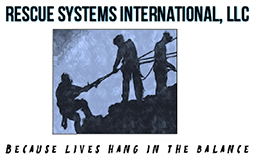
VEHICLE AND MACHINERY
Prerequisites
Spec Rescue International courses are taught in a manner to be compliant with the body of information as outlined in NFPA 1670 and 1006 Guidelines. It is the responsibility of the Authority Having Jurisdiction ( AHJ ) of any organization or its members that attend courses to follow the FULL recommendations as outlined in these standards where pre-requisites are required prior to attending any course. It is also the responsibility of the AHJ to assure full compliance with these standards in regard to placing any of its members in the line of service in any technical rescue disciplines. The AHJ or any of its student members acknowledge that certain technical rescue standards encompass requirements beyond the scope of the course component and fully acknowledge that, while Spec Rescue International offers the course component, full standard compliance rests with the AHJ.
Course Descriptions
Spec Rescue provides a wide range of training opportunities for your organization. Our training is unique in that we focus on not just the knowledge, skills and abilities you need to succeed but in our ‘hidden modules’ we focus on teamwork, team life cycles and team decision training.
Vehicle and Machinery Rescue Courses
Vehicle & Machinery Rescue Awareness
Awareness level personnel shall meet all requirements specified in Chapter 2 of NFPA 472, Standard for Professional Competence of Responders to Hazardous Materials Incidents. Awareness level functions at vehicle and machinery rescue incidents include procedures to conduct a size-up of conditions, identification of the resources necessary to conduct safe and effective operations, implementing the emergency response system site control and scene management, recognition of general hazards associated with vehicle and/or machinery rescue incidents and procedures for the initiation of traffic control. Lecture, hands on activities and group work. Course requires 1 day (4 hours) and student to instructor ratio of 10:1.
Vehicle & Machinery Rescue Operations
Operations level personnel shall meet all requirements specified in Chapter 3 of NFPA 472, Standard for Professional Competence of Responders to Hazardous Materials Incidents and be capable of hazard recognition, equipment use and techniques necessary to operate safely and effectively at incidents involving persons injured or entrapped in a vehicle or machinery. Operations level functions at vehicle and/or machinery rescue incidents include procedures to identify probable victim locations and survivability, making the rescue area safe, including the stabilization and isolation (i.e., lockout/tag out) of all vehicles and/or machinery. Additional environmental skills will teach students how to identify, contain and stop fuel release, as well as mitigation and management of general and specific hazards (fire, explosion) associated with vehicles. Rescue techniques include accessing victims trapped in a vehicle or machinery, protection of a victim during extrication disentanglement, packaging of a victim prior to extrication/disentanglement and performing extrication operations through the use of hand tools. Many hands on activities, case studies and group work. Course requires 2 days (16-20 hours) and student to instructor ratio of 10:1.
Big Rig Technician
This 24 hour specialty course is designed to challenge and enhance the skill sets of vehicle rescue technicians. Spec Rescue and Blue Collar Training network team up to ensure that students will use the latest equipment and rescue techniques to complete scenarios designed after challenging real world incidents. The class will include the integration of heavy wreckers into the rescue operation and working with their operators to achieve successful rescues.
Rescue Techniques for Motor Sports Accident Care Teams
Designed for Emergency Services Personnel who are involved or have the potential to become involved in a racing event, this course is always customized to the specific environment and team. We can include hands-on practical activities using actual race cars (show cars) and assorted training props (such as a roll cage assembly) to enhance participation. Program length can be adapted to accommodate your training needs and schedule. With the formation of a NFPA Automobile Race Tracks Committee, interest has become focused on this area of emergency services delivery. Since there are literally hundreds of Motor sports Tracks across the country, odds are you and your department are either directly involved in this fast paced environment or have the potential for involvement through mutual aid. Each track is unique in layout, type of racing vehicles, emergency services provisions, and overall event management. Some sanctioning bodies have touring emergency services providers; most tracks have arrangements with local agencies. Whether paid staff or dedicated volunteers, all emergency service providers need to review their basic fire and EMS training and understand the unique challenges of the racing environment. For example, due to the special construction of racing vehicles, the old tried and true vehicle extrication techniques not only will not work, they may cause injury or death of the Rescuers. Patient care and extrication from these vehicles must be accomplished quickly and efficiently, but the custom-fitted seats, restraint devices and interior bracing designed to keep the driver safely inside the vehicle allow no room for Rescuers to maneuver. In the Race Track environment, where things happen triple fast, there are many opportunities for emergency responders to become victims. – Promote safety of motor sports emergency teams, track support personnel, drivers, pit crews, officials and spectators at motor sports racing events through effective hands on training programs. – Recognition and identification of the hazards associated with motor sports events. Minimizing and/or eliminating those hazards in a safe and expedient manner. – Develop and enhance the knowledge, skills and abilities of the motor sports workers to safely react and mitigate the emergency incident while reducing and/or preventing injury, loss of life and property. – Recognition that being a fire and rescue provider requires us to operate in a different environment where the operational rules have changed. Specialty course length is customized to fit your needs

